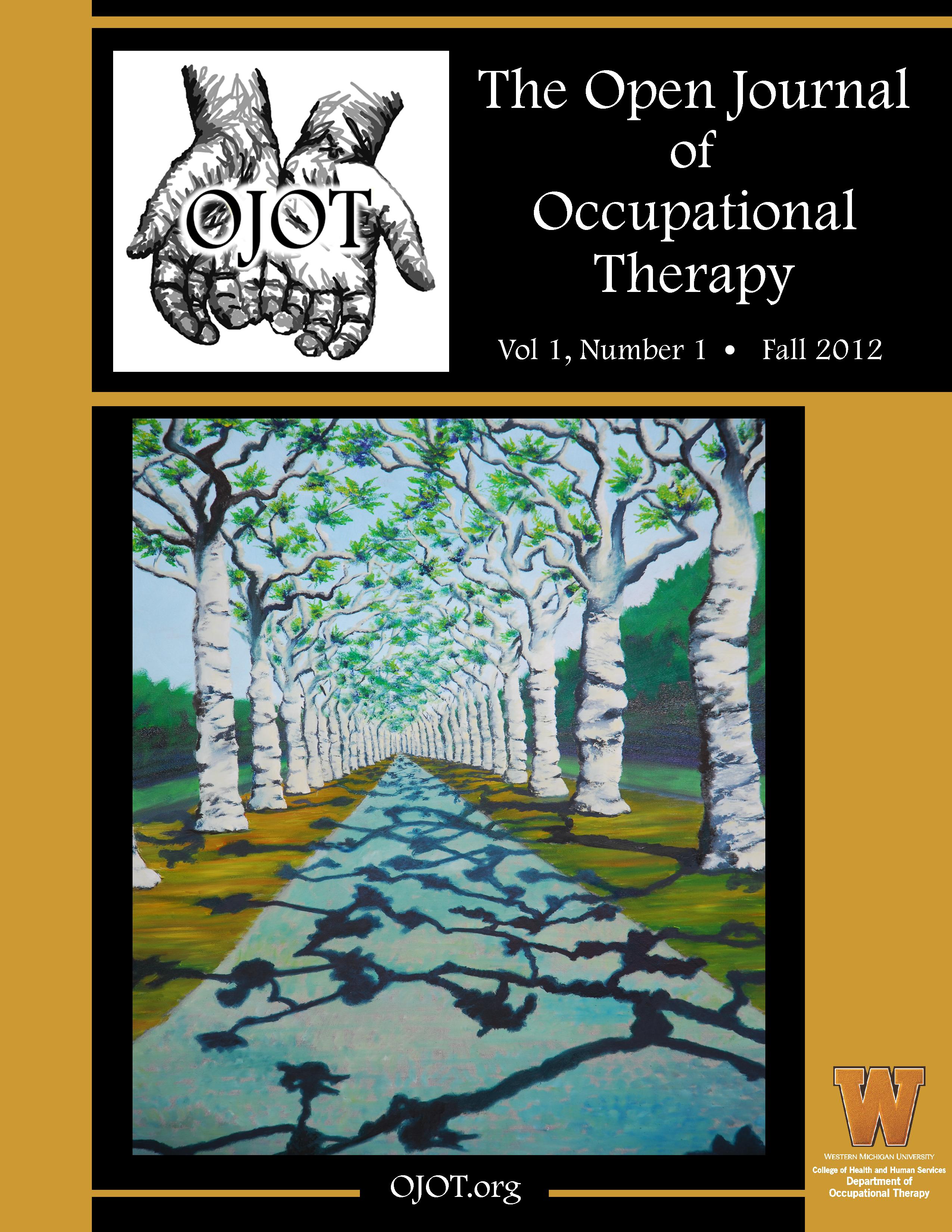ScholarWorks > HHS > OT > OJOT > Vol. 8 > Iss. 4 (2020)
Credentials Display
Amy Armstrong-Heimsoth OTD, OTR/L; Molly Hahn-Floyd OTD, OTR/L; Heather J. Williamson, DrPH, MBA, OTR/L, CPH; Catherine Lockmiller, MLIS
Abstract
Youth who age out of the foster care system and transition to adulthood face challenges that are exacerbated by a history of trauma, severed relationships, and instability of living and educational placements. A review of the literature demonstrates poor outcomes overall for this population. Occupational therapists are positioned to meet the needs that arise during this time; however, a review of emerging roles for occupational therapists is necessary to describe how occupational therapists can best fulfill gaps in current programming. Through a review of the literature and a preliminary mixed-methods study, this paper establishes a direction for the inclusion of occupational therapy for youth aging out of foster care using the Person Environment Occupation Performance (PEOP) model as a structure. Federal, state, and local organizations provide resources to assist transitioning foster youth. However, there is a lack of collaborative, individualized, and evidence-based approaches reporting good outcomes. Specific occupational therapy interventions are suggested to delineate our role with this high-risk population during transition to independent living: both novel interventions and additions to current evidence-based programming.
Recommended Citation
Armstrong-Heimsoth, A., Hahn-Floyd, M., Williamson, H. J., & Lockmiller, C. (2020). Toward a Defined Role for Occupational Therapy in Foster Care Transition Programming. The Open Journal of Occupational Therapy, 8(4), 1-8. https://doi.org/10.15453/2168-6408.1726



Comments
The authors report that the National Institute on Drug Abuse funded project title Institute for Translational Research Education in Adolescent Drug Abuse, Grant # 5R25DA031103-04. Funding supported data collection and did not create a conflict of interest.